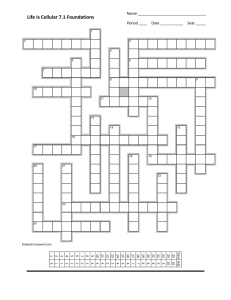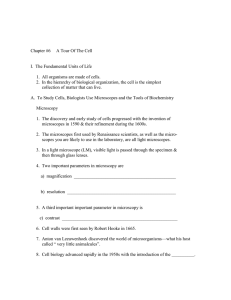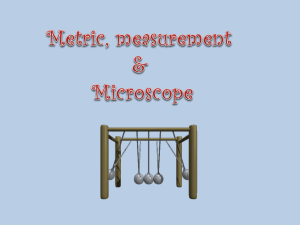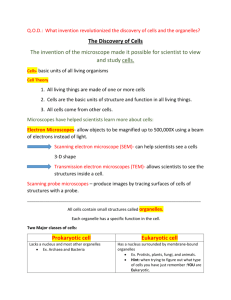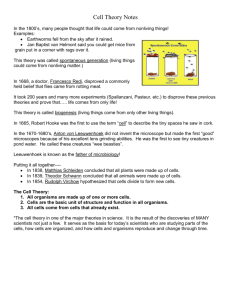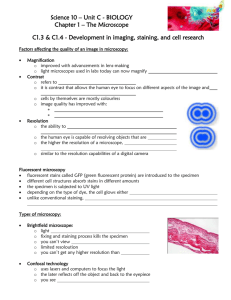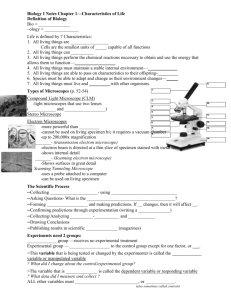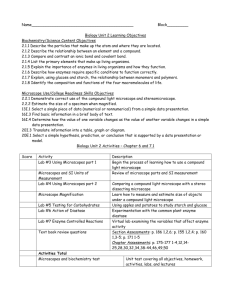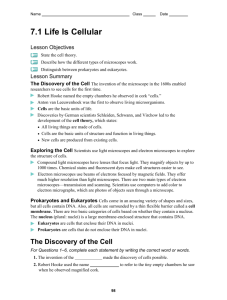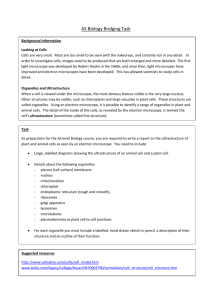1.1 What IS Science??
advertisement
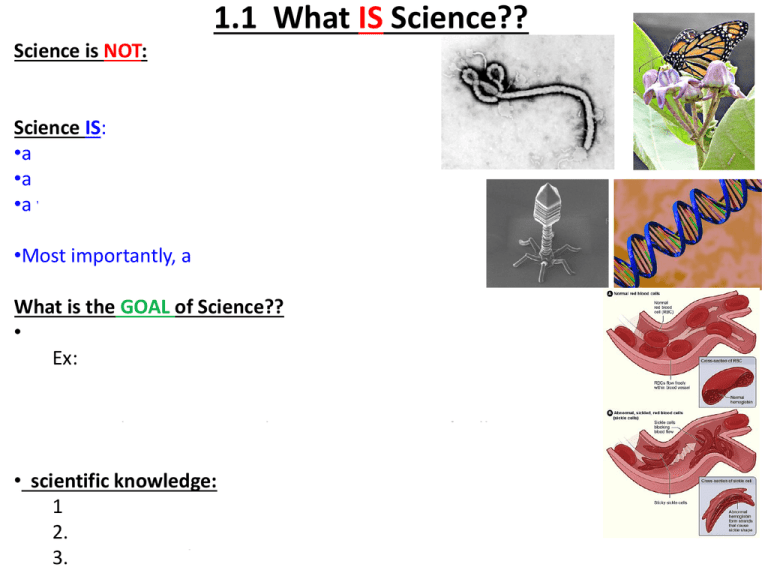
1.1 What IS Science?? Science is NOT: •a static, unchanging group of facts or beliefs. Science IS: •a process of inquiry about how nature works. •a body of expanding knowledge about nature •a way of observing, thinking and knowing the workings of nature •Most importantly, a PROCESS What is the GOAL of Science?? • provide explanations about how nature works Ex: why do monarch butterflies only eat milkweed? how do our cells “know” to express some of its DNA and not all of it? why can a virus only get into one type of cell? • scientific knowledge: 1.Cure disease, place satellites in orbit, clean toxic waste, etc 2.Raises more questions than answers 3.Is a never-ending inquiry What is involved in the PROCESS of science? method of scientific inquiry = a logical way to solve a problem/answer a question 1. Observe/ask questions (“Why is this happening?”) 2. Infer answer/make a guess (hypothesis) (“Maybe because of…”) 3. Design a controlled experiment to test your hypothesis • Independent variable: the deliberate change in the experimental group (aka the manipulated variable) X AXIS • Dependent variable: what is observed/measured/changed in response to the independent variable (aka resulting variable) Y AXIS • Control group – exposed to all the conditions as experiments EXCEPT the one independent (manipulated ) variable 4. Collect/Analyze Data * Quantitative – measured numbers * Qualitative – descriptive observations 5. Make conclusion: to support, revise, or refute original hypothesis Theory = many related hypotheses tied together, backed by many studies and data Ex: theory of relativity or theory of evolution The Dominant Theory is the most widely accepted theory (explanation) Science/Society/Technology/Ethics Ex: thalidomide, DDT, super bugs and bio weapons, cloning of tissues or animals 1.3 Biology is the Study of Living Things Q: What defines a living thing? What must it do? A: Must have all 8 of the following characteristics of living things: 1. made of at LEAST one cell ex: a bacterium is one single cell * a cell is the smallest unit that is considered living 2. have a genetic code written in the language of DNA ex: every living thing has DNA as its genetic blueprint 3. can obtain and use materials and energy ex: materials and energy are used to grow and reproduce ex: all the chemical reactions in the cell = metabolism 4. can grow and develop (growth = size; develop = change) ex: fertilized egg 9 months to a trillion cells, specialized ex: cell differentiation is the KEY to correct development * cells specialize their traits and abilities (muscle, nerve, eye) * certain cells must also DIE on time to make new structures 8 Living Characteristics cont’d 5. Can reproduce ex: sexual: union of 2 DIFFERENT sets of DNA from 2 parents (most plants and animals) ex: asexual: one organism produces offspring which are genetically identical to itself (ex: aphids, bees) 6. Can respond to its environment ex: detect and react to stimuli (through senses) 7. Can maintain a stable internal environment (homeostasis) ex: need an optimal temperature, pH, water and salt balance for metabolic functions to continue 8. Can change over time (the species evolves) ex: collection of changes in the gene pool of the species in response to environmental factors Scientific Measurement • • • • Metric system is used in data collection SI : International System of Units Based on multiples of 10, easy to use Metric Units: – Length = meter (m) – Volume = liter (L) – Mass = gram (g) – Temperature = Celsius (°C) Microscopes The Compound Light Microscope Most commonly used microscope Can be used to see living specimens Magnifies up to 2000X Limits of Resolution The point at which objects get blurry and detail is lost Limits to what we can see with a compound light microscope Using a Compound Light Microscope Some specimens can be seen without any special preparation Some specimens blend in with their environment so they have to be stained to see them (stain will kill them) Electron Microscopes Transmission electron microscopes (TEMs) – shines a beam of electrons through a sample and then magnifies the image of the CROSS SECTION of the object, must be sliced THIN (= death) Scanning electron microscopes (SEMs) – a pencil-like beam of electrons scans back and forth across the surface of a specimen, the electrons that bounce off the specimen are picked up by detectors that provide the information to form an image of the SURFACE of the object; can magnify up to 250,000X Limitations of Electron Microscopes Living cells cannot be observed in the electron microscope Techniques of a Biologist Fractionation - first the cells are broken apart using a blender, then the broken bits of cells are placed in a tube in a centrifuge Centrifugation – the tube is then spun up to 20,000 times per minute, separating the cell parts, heavier parts settle in the bottom of the tube, while the lighter parts float on top Micromanipulation Another way to remove parts of a cell Microscopic instruments are used to dissect, remove, insert, or manipulate specific parts of a cell Cell Cultures Used to study a particular kind of cell An entire population of cells is grown from a single cell in a controlled environment so that many copies of the same type of cell can be studied EX/Hela cell line – cell culture obtained from Henrietta Lacks in 1951, first “immortal” cell line
